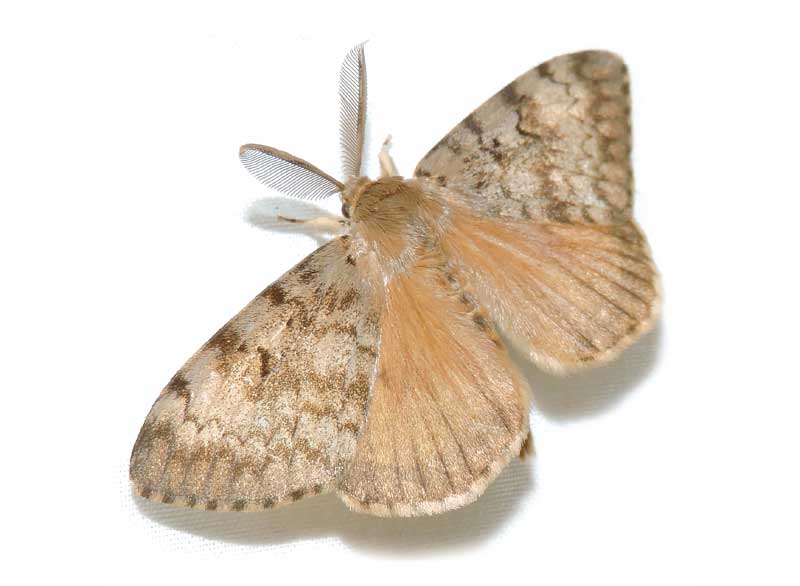
Gypsy Moth
Move over forest fires, floods, and pandemics. No decent apocalypse is complete without a plague of locusts, or in this case European gypsy moths. Appearing in a seven-to-ten-year cycle, the Lymantria dispar dispar made its appearance in eastern Ontario last year, with heavy infestation and resulting defoliation occurring in many areas.
Gypsy moths get their name from their habit of migrating each day from the leaves, down the trunk, to shadier spots or host objects on the ground. Bud Guertin, Presqu’ile Provincial Park’s first naturalist, has another theory. “They move around so well, hitching rides wherever they can, on automobiles, firewood, or whatever will take them to a new feeding ground.”
The nasty creatures have redeeming qualities. They are tasty to more welcome backyard guests and forest friends. In various stages, the gypsy moth can be found on the menu of spiders, parasitic wasps, chipmunks, skunks, blue jays, orioles, and the much-adored black-capped chickadee.
Although eradication is nearly impossible, Bacillus thuringiensis kurstaki (Btk), a biopesticide benign to mammals, bees, and other pollinators, is deadly to caterpillars and is used as a pesticide by professionals and homeowners alike.
Other methods include examining trees, firewood, barbeques, and outdoor equipment for the tell-tale fuzzy tan egg masses (each one can contain 1,000 eggs), scraping them into a container and soaking them with soap and water. This is best done in late fall, winter, and early spring.
Once the caterpillars emerge, handpick them from trees. They’re recognizable by their pairs of blue dots followed by a series of red dots. They have long hairs which can cause irritation or allergic reactions, so be sure to wear gloves. Dunk them in soap and water. For larger infestations, wrap burlap around the trunk of the affected tree at chest height and secure it with a string. Fold the burlap over itself, creating a skirt, and remove the caterpillars daily. It’s a yucky chore, but the trees will be grateful.
The pheromone trap is also highly effective. The males are attracted to the prospect of romance, enter the trap, and an insecticide quickly spoils the mood. Female gypsy moths don’t fly, so the males are highly tuned to this lure. A single gypsy moth can eat a square metre of foliage in its very short lifespan, and can lay hundreds of thousands of eggs so its progeny can do the same next year. They prefer oaks but will dine on anything in their path.
A healthy deciduous tree can most likely survive defoliation for one or two years, but it will be far more susceptible to disease. After two years of leaf loss, the tree may never recover. Once they have decimated deciduous trees, leaving the branches bare for the season, gypsy moths will target white pine, which often cannot survive the season, because coniferous trees store their energy and nutrients in their needles. Without them, the tree has nothing left to help it survive.
It’s worth the effort to examine backyard trees and make the effort to control the gypsy moth. A scraper, a pair of gloves, some soap and water can help prevent your property from sporting that post-apocalyptic look for the summer and fall.
Story by:
Catherine Stutt




